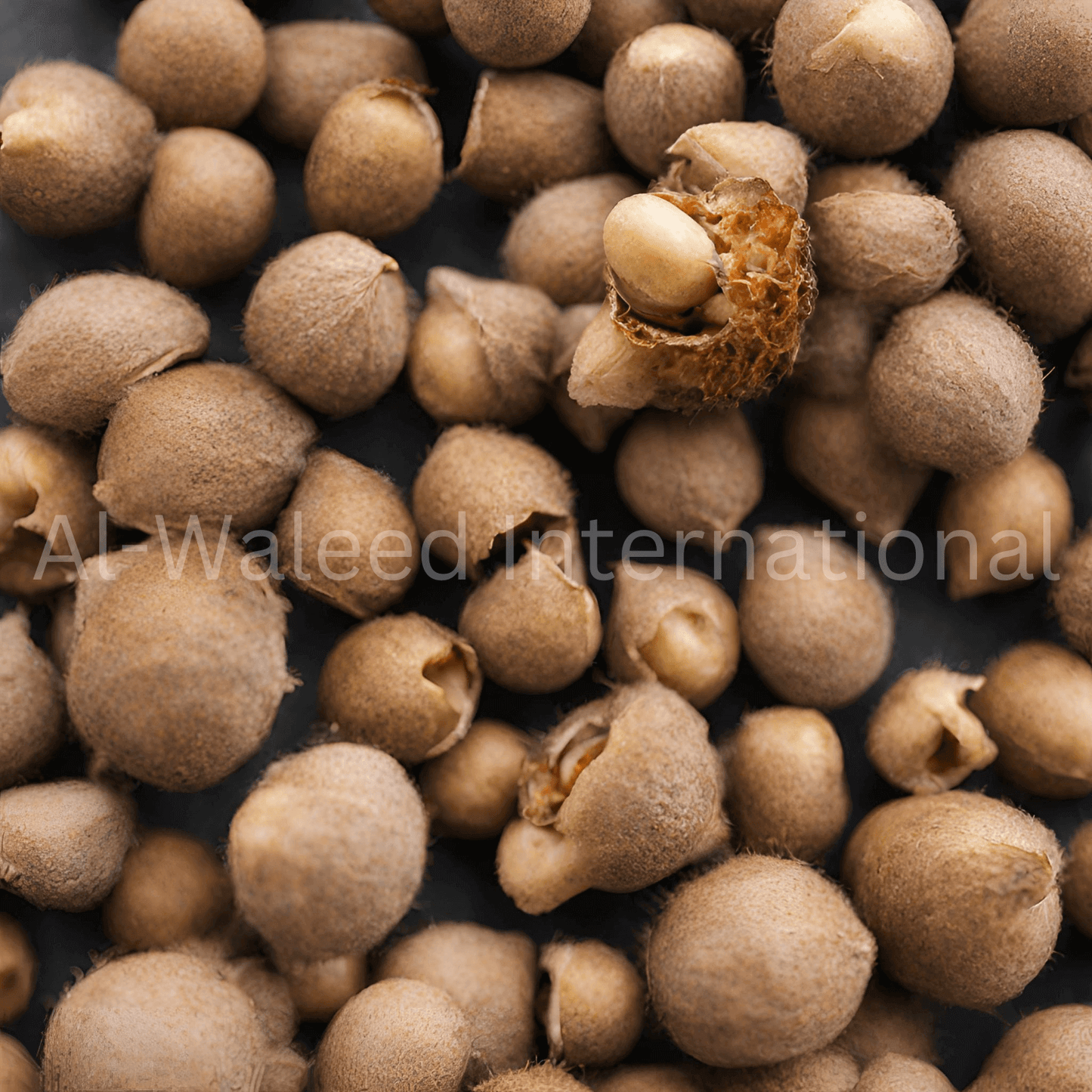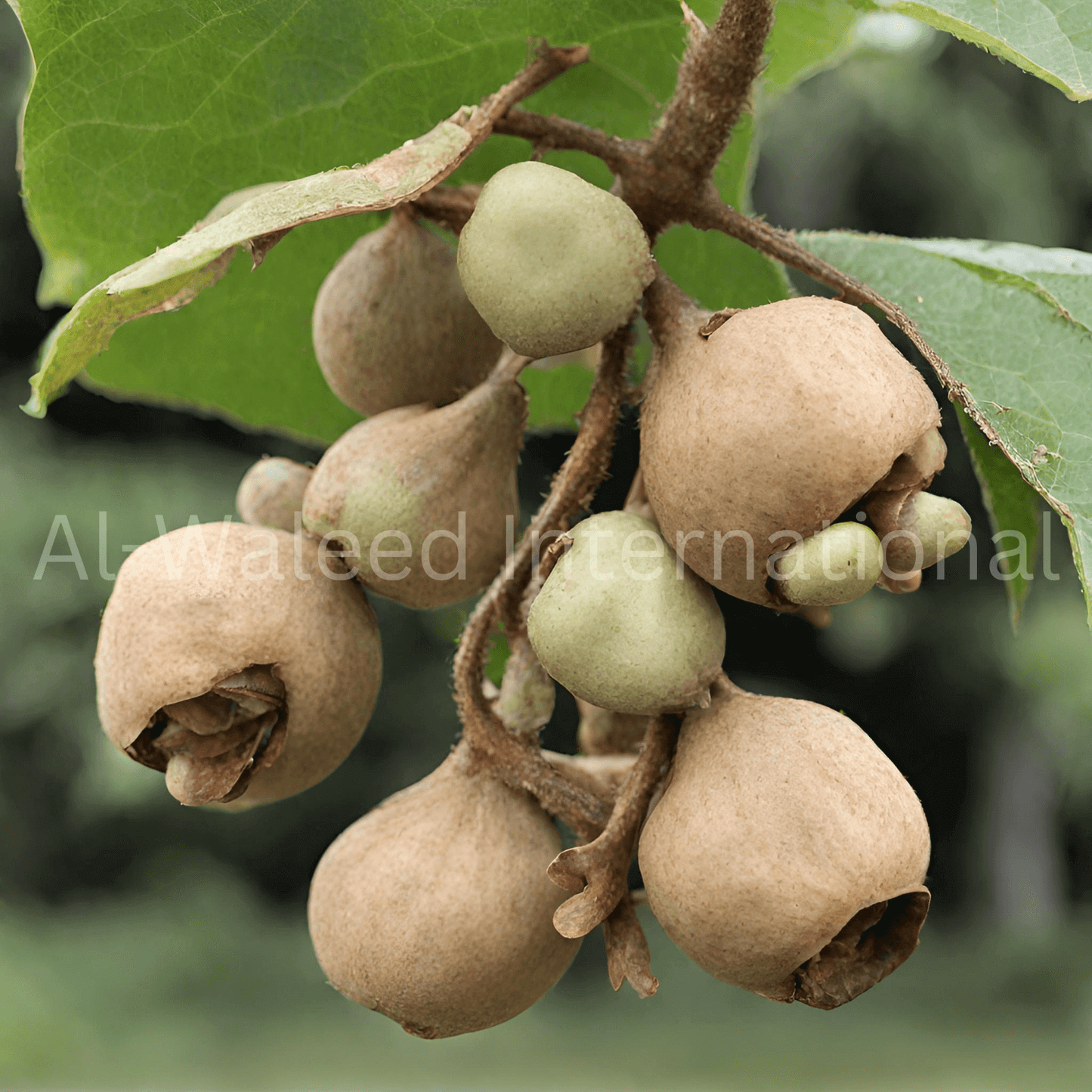Al-Waleed International
Gall Nuts (Quercus Infectoria)
Gall Nuts (Quercus Infectoria)
Couldn't load pickup availability
Description:
Gall nuts, scientifically known as Quercus infectoria, are small, round, woody growths that develop on oak trees, primarily the Quercus infectoria species. These gall nuts are formed as a result of the tree's response to insect or fungal infestations.
Appearance: Gall nuts are small, typically ranging from 1 to 2 centimeters in size, with a hard, woody texture. They are usually brown or dark reddish-brown in color.
Formation: Gall nuts develop as a natural defense mechanism of the oak tree in response to the activity of certain insects or fungi. The tree forms these galls around the affected area, encapsulating and protecting it from further harm.
Chemical Composition: Gall nuts contain a variety of chemical compounds, including tannins, gallic acid, and other polyphenols. These compounds contribute to their medicinal and industrial properties.
Certifications:
- USFDA
- Non-GMO
- ISO 9001; 2015 HACCP
They have been used for various purposes for centuries due to their medicinal and industrial properties. Here is a description of gall nuts, their uses, and potential benefits:
Uses:
Traditional Medicine: Gall nuts have been used in traditional medicine systems, particularly in herbal remedies in various cultures. They are believed to have astringent, anti-inflammatory, and antimicrobial properties.
Treatment of Wounds and Skin Issues: Gall nuts have historically been applied topically to treat wounds, skin irritations, and insect bites.
Oral Health: In some cultures, gall nuts have been used to alleviate toothache and gingivitis due to their astringent properties.
Dye Production: Gall nuts have been used as a source of natural dyes for textiles and inks. The tannins in gall nuts can produce black or dark colors when combined with iron salts.
Ink Production: Historically, gall nuts were a key component in the production of iron gall ink, which was widely used for writing and drawing.
Benefits:
Astringent Properties: Gall nuts are known for their astringent properties due to their high tannin content. This property makes them useful in tightening and toning tissues, which can be beneficial for wound healing and skin care.
Antimicrobial Activity: Some studies suggest that gall nuts may exhibit antimicrobial properties, which can be valuable for treating various infections and skin conditions.
Natural Dye: The tannins in gall nuts have been used for centuries to produce natural dyes for fabrics and other materials, offering an eco-friendly alternative to synthetic dyes.
Medical: In traditional herbal medicine, gall nuts have been used to address a range of health issues, although more research is needed to validate their efficacy for these purposes.
Note: It's important to note that while gall nuts have a long history of use, their medicinal and industrial applications have diminished over time with the advent of modern medicine and synthetic materials. Furthermore, the use of gall nuts should be approached with caution, as their high tannin content can be harsh and drying, particularly when used topically. Consulting with a healthcare professional or expert in herbal medicine is advisable before using gall nuts for any medicinal purposes.
Storage Instructions:
Store gall nuts in a cool, dry place in an airtight container to prevent moisture absorption and maintain their quality.
Health Precautions/Disclaimer:
We do not intend to diagnose, treat or prevent any disease or ailments.
Buy Gall Nuts (Quercus Infectoria) at Wholesale Price:
To buy at wholesale price, you may write to alwaleedexporters@gmail.com or WhatsApp at +92 314 2001355Share




